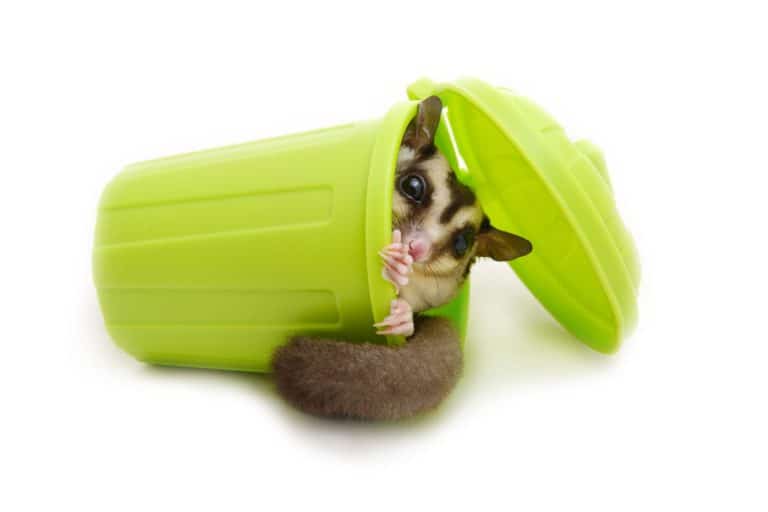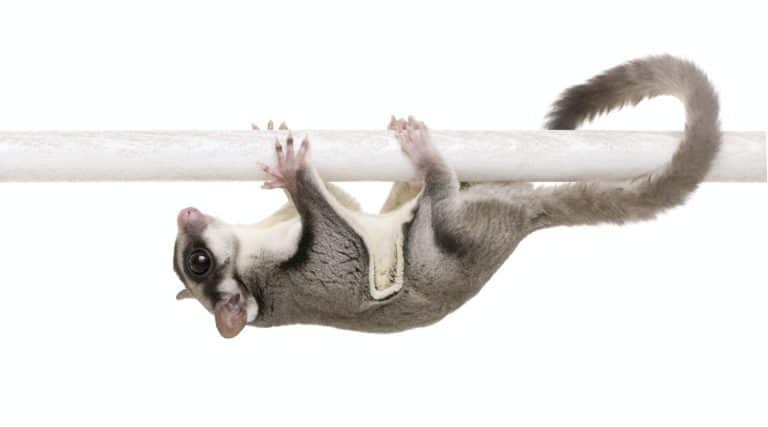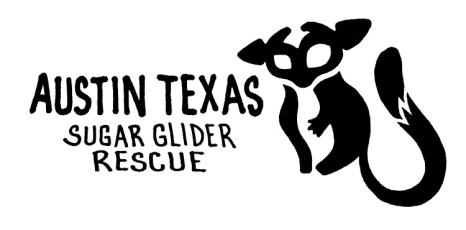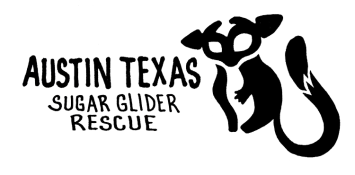Austin Texas Sugar Glider Rescue
Sugar Glider Care Tips and Recommendations

Fostering A Sugar Glider from Austin Texas Sugar Glider Rescue
Fostering is pretty easy. I’ll give you everything you need except for fresh produce. Cage, wheel, toys, cage set, a starter pack of the staple, etc.. anyone who fosters has to live within an hour of Austin to help make

An Introduction to Sugar Gliders
Sugar Gliders, a type of small marsupial, originate from the wilds of Australia, Indonesia, and Tasmania. These arboreal creatures are known for their ability to glide from tree to tree using a special adaptation in their skin. While the Sugar

Caring For a New Sugar Glider Bonding & More
When it comes to establishing a relationship with your Sugar Glider, bonding with him/her is one of the most important things you can do to build that relationship. It is easier to bond and form a relationship with a young

What its like having a Sugar Glider as a pet?
Sugar gliders come in a variety of colors and sizes. They usually measure about 6 inches in length and weigh about 4–5 ounces when fully grown. These adorable creatures are nocturnal, which means they sleep during the day and are
Common Sugar Glider Questions
Sugar gliders are not native to North America, and have very specific dietary requirements. In the wild they are nectar eaters, and get a lot of their nutrients from bugs and eucalyptus. In captivity, we have been able to determine some diets that will give them all the nutrients they require. It should also be noted that it is important to supplement their diet with live mealworms and fresh eucalyptus. Below is a list of the recommended diets. Please note it is curical that you research these diets carefully before choosing one.
CUREENTLY ACCEPTED DIETS - Simply click on the diet name below to learn more.
**We reccommend the use of critter love salads instead of the recommended fruits and veggies. We do not recommend that you use the Critter Love Supplements.
For eucalyptus we recommend Euc Products of California
Sugar gliders are small marsupials that can weigh in a range from 70-140 grams depending on their build and sex. To put into perspective they are a bit smaller than a squirrel and have tails that are 1.5 times the length of their body.
Yes! Sugar gliders can be an amazing pet. Like most animals those form Rescues may need a bit more TLC and understanding that their past may not have been the best.
Adults and children alike should avoid putting fingers in the cage because sometimes sugar gliders think it is food or a toy. Plus who wants a finger in their face!
We don't want to scare you off, but with patience, careful handling children can do great with sugar gliders. Along with careful handling and patience sugar gliders will bond to the whole family!
Sugar gliders in captivity with proper care including safe cage items, diet, and regular veterinary care will live between 10-15 years.
YES! We recommend that sugar gliders should be seen at least every 6 months and at minimum every 12 months. This is because sugar gliders are known for hiding their illness well and also they are prone to dental issues (sometimes due to too many treats).
Sugar gliders are exotic animals and must see a specialized veterinarians who know sugar gliders. Be prepared if you have other animals this is not the same as your current veterinarian. As such we HIGHLY recommend having a personal vet fund to cover expenses in emergencies. Most visits can cost between $200 - $1000 easy and can come up from there depending on the complexity.
They can be incredibly loving. As they bond with you, they’ll start to groom you. Some gliders that we rescue have never been handled by humans before coming here. So we work with them to teach them how to trust humans. That way when they go to their new home, they’re ready to bond with their owners. However, you should always expect that the initial few weeks of owning them, they’ll be stressed and confused. Be patient with them, and please ask us if there is anything we can do to help you through the process. We have a section with tips on how to successfully bond with your new gliders. Remember that these are animals and they are all different inlcuding the time it may take for them to bond.
Sugar gliders are very intelligent, and need a lot of mental stimulation. Some great things you can provide for them to keep them entertained are a big cage, 1-2 safe wheels (see the supplies section for a list of safe wheels), and lots of toys. We can help you make sure you have everything they need. Some other great enrichment items are a bonding tent to hang out with them and help them bond with you on their own time (see supplies for specific links), and a “roll-a-round,” which is essentially a glider-safe hamster ball.
The only materials that are safe to put in the cage are unpainted plastic, cork bark, anti-pill fleece, eucalyptus, and gourds/coconuts. Any other fabric or material is likely unsafe for them.
Sugar gliders can eat any kind of nut that a human can eat as long as it’s raw and unseasoned. They can also eat a variety of seeds. Treats are typically high in fat so try to limit them to one per day.
Live mealworms are not technically a treat as they’re recommended with every diet, but gliders love them. You may need to break one open if your glider isn’t used to eating live mealworms so they can smell that it’s food.
Treat favorites include:
-Pine nuts
-Almonds
-Pumpkin seeds
-Sunflower seeds
-Pecans
-Dried, unsweetened fruit
-Yogies (sugar glider yogurt drops or white baking chips without cocoa)
-Mini marshmallows
-Fish sticks (https://a.co/d/7pcmImu)
-Honey
Again limit treats to avoid dental issues and weight gain.

